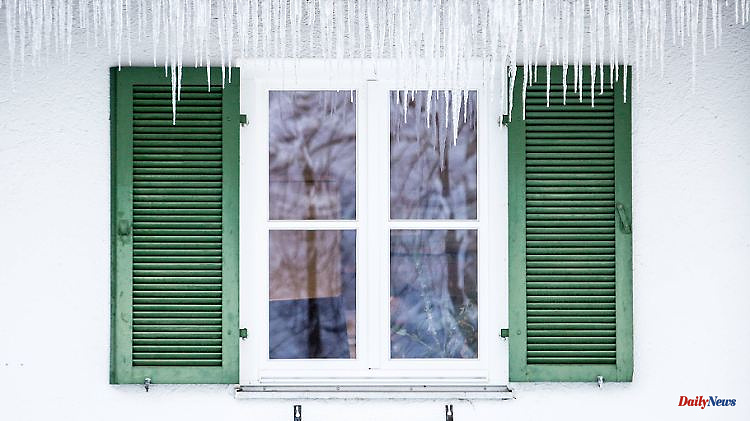Before the cold season begins, it is important to take a close look at your home and quickly make minor repairs. What is important now.
It's cold outside, that's okay - but please not inside if possible. So that it is comfortable at home in sub-zero temperatures, there are now a few preparations to be made. The focal point is, of course, the heating system.
Homeowners should have them serviced and optimally adjusted by a specialist company at least once a year. This has two advantages: Firstly, it is then less susceptible to faults and secondly, energy consumption is reduced. And what else is important for a winterproof house?
Clean gutters and downspouts
In autumn, a lot of leaves collect in the gutters and downspouts. "Whether this is the case can often be checked by looking out of the skylight," says Klaus-Peter Frenzel from the Jena-Saaleland regional office of the Association of Private Builders (VPB). Leaves in the gutters and downspouts should be removed. Otherwise there is a risk of rainwater overflowing and soaking the exterior plaster.
Moisture damage to the insulation and wood cannot be ruled out either. Cleaning works effortlessly and without a ladder with a telescopic rod. If that is too time-consuming, you can also hire a cleaning company to do the work.
Check roof for damage
Signs that the roof may not be in order are water stains in the sloping ceilings or ceilings below the roof. In many cases, the homeowner can inspect the roof themselves. "If it's not possible to take a look from the street, then maybe out of a skylight or dormer window," says Bernd Redecker from the Central Association of the German Roofing Trade in Cologne.
The following applies to the tiled roof: If the roof looks even from the surface, no tiles are clearly missing and there are no cracks or chips on the tiles, these are good signs. If, as a layman, you are not sure about every tile, you can consult a master roofer who can identify hidden dangers to the tightness.
The professional association also has checklists for guild companies that they can go through with the customer at an on-site appointment. Although this is not free of charge, it is always cheaper than "roof damage" with the long-term consequences to be expected.
Inspect facade
Inspect the exterior of your home and check for broken areas such as cracks and chips. If you discover any, you must act quickly - otherwise there is a risk of moisture penetrating the walls. "Particularly relevant are facade cracks on the weather side from a depth of 0.3 millimeters," says Frenzel.
Minor damage can often be easily repaired with new plaster and/or paint. The material can be bought in hardware stores. If major repairs are pending, specialists must be called in - for example bricklayers or plasterers.
Check windows and seal if necessary
Are the windows still closed? There is a trick to find out. Open the window and place a piece of paper on the frame. Now close the window. Try pulling out the paper with the window closed. It is working? Then the following applies: replace the seals.
To do this, remove a piece of the old sealing tape and take it to the hardware store as a sample. Get new sealing tape there. The next step is: Carefully remove the old sealing tape and carefully clean the surfaces on which the new seal is to be placed. Then glue in the sealing tape cut to the appropriate length - and you're done.
Check water lines
"You should check the water pipes, especially in the basement, after all it's mostly unheated," says Klaus-Peter Frenzel. Are there pipes that lead to tap points outside? They must be emptied and blown out completely. Otherwise there is a risk that the residual water will freeze at sub-zero temperatures and the pipes will burst.
The same risk exists with indoor spaces that are not heated enough. If the windows are permanently open in such rooms, it cannot be ruled out that pipes will freeze and damage the walls and floors, for example. Therefore, even in rooms that are not in use, never turn the heating to zero when the temperature is below zero and ventilate regularly.
Drain water pipes in the garden
Water pipes in the garden must also be emptied, otherwise they risk bursting in the cold. "The garden water pipes should also be packed with insulating material to protect them from frost," says Klaus-Peter Frenzel. This can be material wool or PUR foam sleeves that are wrapped around the pipes.












